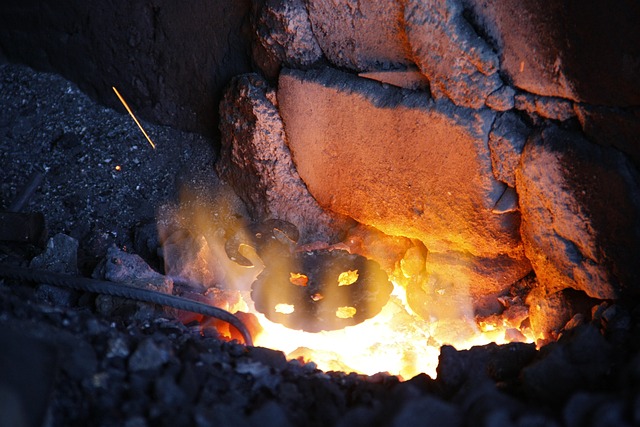Hot vs Cold Forging – Which is the better option?
The forging processes change the shape of a metal workpiece at either cold or hot temperatures. Whether to use hot or cold forging depends on the function and volume of the individual component part.
Simplified process: Hot Forging
- Hot Forging or Hot Stamping is a production process which “hammers” metal between two dies to form the desired shape.
- Half of the die is attached to the “hammer” (upper section) and the lower half of the die is attached to the “anvil” (lower section).
- A metal “blank” is placed in the lower half of the die and then “struck” with the upper die. The force of the strike forces the metal to flow in all directions, filling the die cavity and giving the parts a very strong grain structure.
- Excess metal is squeezed out between the die faces, and is called flash or flashing.
- After the forging operation, the flash is cut off in another press with a trimming die.

Advantages of Hot Forging:
- Dies can be custom made to the part specifications, so completely bespoke and complex designs can be manufactured as the malleable metal can be easily molded.
- The integrity of the metal isn’t compromised during the heating process, so the metals can be easily shaped without causing any defects in the material; making it strong and ductile.
Disadvantages of Hot Forging:
- The forged finish usually requires some further work, such as a sand-blasting process, to improve the aesthetic quality of the part
- The parts are usually less accurate to dimensional tolerance, so may require turning/milling operations to refine them after forging
- The operational/running costs for the heat treatment of the parts can be high
- There is a risk that parts can warp due to the excess heat applied.
Simplified Process: Cold Forging
- Compressive force is used to squeeze the metal between a punch and a die at room temperature
- This can be repeated until the material completely conforms to the contours of the die so is in the desired shape

Advantages of Cold Forging:
- There is little to no material waste with near 100% material utilization
- There is usually little need for any finishing work as cold forging generates a high surface finish quality
- The process allows for high production rates and repeatability, so can be a cost effective option on high volume production runs.
Disadvantages of Cold Forging:
- Not all metals can be used and some metals are much more likely to crack or break during the process.
- The shapes are often more basic and less intricate, so if complex shapes are required then cold forging cannot be used.

